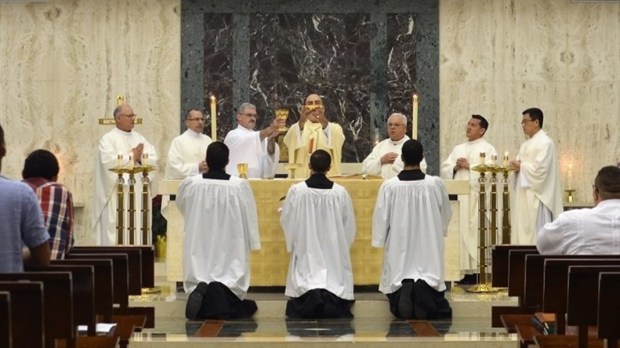Lenten Campaign 2025
This content is free of charge, as are all our articles.
Support us with a donation that is tax-deductible and enable us to continue to reach millions of readers.
In both Catholic and Protestant circles the word “seminary” is often used, but not always generally understood. What is a seminary?
According to the Merriam-Webster dictionary, the word is derived from the “Middle English, seedbed, nursery, from Latin seminarium, from semin, seed.” The word was initially used for agricultural contexts, but was quickly adapted for various forms of education.
The Catholic Encyclopedia explains, “The word seminary is sometimes used, especially in Germany, to designate a group of university students devoted to a special line of work. The same word is often applied in England and the United States to young ladies’ academies, Protestant or Catholic.” In this sense it refers to the “seed” of wisdom that germinates and grows in the mind of the student.
However, in recent years it has become more commonly associated with centers of training for both Catholic and Protestant clergy. In the Catholic Church this typically means a place where men live in community and attend philosophical and theological courses at a nearby university, while also receiving additional formation to become a priest. The seminary is designed to provide a suitable place for vocational discernment, allowing men to carefully consider God’s call in their lives, whatever it may be.
In this sense it relates to the original word of “seminary” as a place where the “seed” of a vocation is fostered and allowed to grow.
Of those men who enter seminary, only 30% (roughly 1 in 3) continue on to be ordained a priest. Seminarians are free to leave seminary up until the day of their ordination. This fact is not a fault of the seminary or the individual discerning, but is a reality of life that not all men are called to be ordained a priest. It takes time spent away from the world to properly discern that call and be formed into the man God created him to be.
Read more:
Why most young men should enter seminary
With the increasing secularization of society, the role of the Catholic seminary, particularly in the United States, is changing as well. For example, the Vatican released a document in 2016 that proscribes an initial year of formation outside of traditional seminary studies. This provides young men the opportunity to have a year dedicated to personal renewal and formation, with an emphasis on vocational discernment. At the end of the year the young man would then move on to philosophical studies, or return to the world and pursue his vocation elsewhere.
Tied to this idea of a generalized program of spiritual formation, seminaries similar to St. John Vianney in St. Paul, Minnesota, put an emphasis on forming strong, Catholic men, “Saint John Vianney College Seminary is proud to serve the Church in raising up saintly men who will answer the call to sacrifice all for the love of Christ. Seminary life is marked by communal prayer, fraternity, evangelistic zeal, growth in virtue, and intellectual engagement. It is a house of discernment filled with encouragement.” The call to priesthood, while important, only comes after being formed into a faith-filled man on fire with God’s love.
From this point of view the seminary is not a “priest factory,” mindlessly creating robot priests to fill vacancies in local parishes, but forming authentic disciples of Jesus Christ who are capable of changing the world, no matter their vocation.
For those interested in seeing a brief look into such a seminary, here is a video that gives an honest look at the role of Catholic seminarians in the 21st century.

